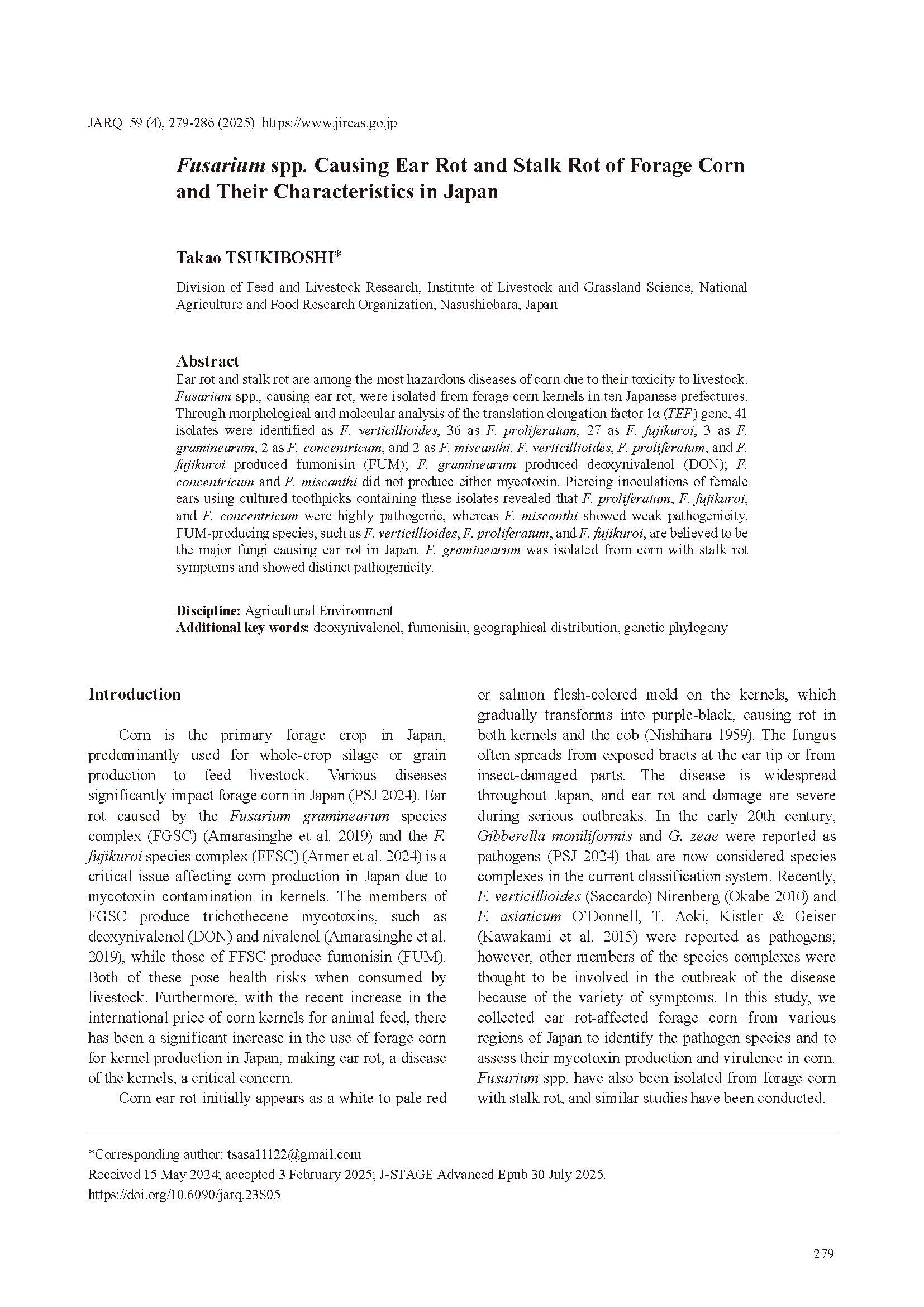Fusarium spp. Causing Ear Rot and Stalk Rot of Forage Corn and Their Characteristics in Japan
Japan Agricultural Research Quarterly
| ISSN | 00213551 |
|---|---|
| NII recode ID (NCID) | AA0068709X |

Full text
jarq59-4_279-286.pdf11.81 MB
Ear rot and stalk rot are among the most hazardous diseases of corn due to their toxicity to livestock. Fusarium spp., causing ear rot, were isolated from forage corn kernels in ten Japanese prefectures. Through morphological and molecular analysis of the translation elongation factor 1α (TEF) gene, 41 isolates were identified as F. verticillioides, 36 as F. proliferatum, 27 as F. fujikuroi, 3 as F. graminearum, 2 as F. concentricum, and 2 as F. miscanthi. F. verticillioides, F. proliferatum, and F. fujikuroi produced fumonisin (FUM); F. graminearum produced deoxynivalenol (DON); F. concentricum and F. miscanthi did not produce either mycotoxin. Piercing inoculations of female ears using cultured toothpicks containing these isolates revealed that F. proliferatum, F. fujikuroi, and F. concentricum were highly pathogenic, whereas F. miscanthi showed weak pathogenicity. FUM-producing species, such as F. verticillioides, F. proliferatum, and F. fujikuroi, are believed to be the major fungi causing ear rot in Japan. F. graminearum was isolated from corn with stalk rot symptoms and showed distinct pathogenicity.
| Date of issued | |
|---|---|
| Creator | Takao TSUKIBOSHI |
| Subject | deoxynivalenol fumonisin geographical distribution genetic phylogeny |
| Publisher | Japan International Research Center for Agricultural Sciences |
| Received Date | 2024-05-15 |
| Accepted Date | 2025-02-03 |
| Available Online | |
| Volume | 59 |
| Issue | 4 |
| spage | 279 |
| epage | 286 |
| DOI | 10.6090/jarq.23S05 |
| Relation | eng |
| Language | eng |
